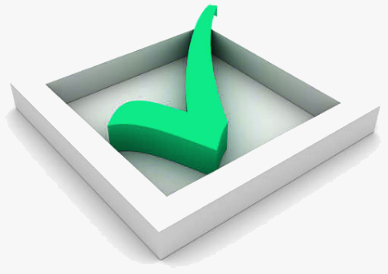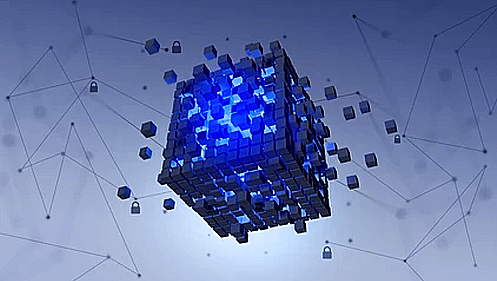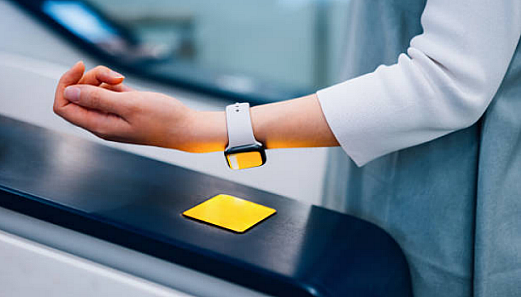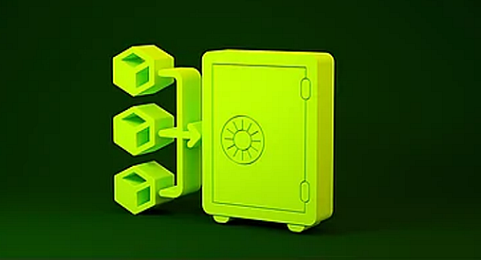Accredited InvestorsAltcoinAnatoli UnitskyAnti-Money Laundering (AML) In CryptoAPIArbitrageArtCoin TokenArticle DirectoryASICAuction Terminology GlossaryBasics of Stock Market InvestingBear MarketBest Crypto Payment Provider In the WorldBitcoinBlockchainBlockchain ConfirmationBlockchain Consensus MechanismBlockchain ForkBlockchain GlossaryBored Ape Yacht ClubBuild a Business That OutperformsBull MarketBuying SkyWay SharesByzantine Fault Tolerance (BFT) ExplainedCasascius CoinCentral Bank Digital Currency (CBDC)Centralized Crypto ExchangeCoinCoinsetCold WalletCollateralCommodity Futures Trading Commission (CFTC)Cross-Chain TechnologyCRUCrypto ExchangeCrypto GlossaryCrypto JokesCrypto Terms to KnowCrypto TickerCryptocurrencyCryptographyCryptojackingCryptounit BlockchainCryptounit GlossaryCryptounit ProgramdApp (Decentralized Application)Dead CoinDecentralized Exchange (DEX)Decentralized Finance (DeFi)Difference Between Bitcoin and EthereumDifferent Ways of Investing MoneyDigital CurrencyDistributed LedgerDo Your Own Research (DYOR)Dollar Cost Averaging (DCA)Dow Jones Industrial Average (DJIA)EncryptionERC-20ERC-721EthereumEvoScentFear Of Missing Out (FOMO)Fear, Uncertainty and Doubt (FUD)Fiat MoneyFNT Fintech CompanyGenesis BlockGlobal Unit PayGlossary of Banking TermsGlossary of Business TermsGlossary of Financial TermsHalvingHODLHot WalletHow Do I Start InvestingHow Rich is Satoshi Nakamoto?How to Create a BlockchainHow to Find Private InvestorsHow to Get Into FintechHow to Program Smart ContractsI Am Thrilled to Be a Part of This Global ProjectInitial Coin Offering (ICO)Initial Public Offering (IPO)Initial Token Offering (ITO)Innovation Basalt TechnologyInnovative Transportation TechnologiesInternational Bank Account Number (IBAN)Investing in Gold Mining StocksInvesting in Gold MiningJagerJoy of Missing Out (JOMO)Know Your Customer (KYC)LedgerLiquidity in CryptocurrencyMaker and Taker Fees in Crypto TradingMarket Capitalization (Market Cap)Meme CoinMetal Credit CardMetaMaskMillenials Now Have Access to Generational WealthMy Best Investment EverNew Digital EvolutionNFT GlossaryOff-Chain TransactionsOn-Chain TransactionsOpen Edition NFTPeer-to-Peer (P2P)Personal Loan GlossaryProbably the Best STO on the MarketProof of Stake (PoS)Real Estate Glossary of TermsReal Estate Investing GlossaryRebase TokenSecurities and Exchange Commission (SEC)Security Token ExchangesSecurity Token Offering (STO)Soulbound Decentralized Identities for Security TokensSoulbound ID Launch by Stobox Proves a SuccessSoulbound TokensStoboxStock Market GlossaryTestimonialsTether Platform and Token (USDT)UnitEx ExchangeUnitsky String TechnologiesUNTBUSDUValidatorWe Started Investing When We Were 25What are Blue Chip NFT?What are Blue Chip Stocks?What are Crypto Assets?What are Crypto Smart Contracts?What are CryptoPunks NFT?What are Digital Assets?What are Digital Collectibles?What are Gas Fees?What are Gas Wars?What are Hashmasks?What are Non Fungible Tokens?What are Non-Sufficient Funds (NSF)?What are Soulbound Tokens (SBT)?What are Stablecoins in Crypto?What are Transactions Per Second (TPS)?What are Utility NFTs?What are Utility Tokens?What Does Burning Crypto Mean?What Does Diamond Hands Mean?What Does Paper Hands Mean?What Does To The Moon Mean?What Does WAGMI Mean?What Happened to Satoshi Nakamoto?What is a 51% Attack?What is a Baby Boomer?What is a Backlink?What is a Banner?What is a Barcode?What is a Bid-Ask Spread in Crypto?What is a Block in Blockchain?What is a Block Reward?What is a Blockchain Address?What is a Blockchain Node?What is a Blockchain Oracle?What is a Blog?What is a Bond?What is a Bot?What is a Broker?What is a Business Accelerator?What is a Cash Cow?What is a Commercial Bank?What is a Commodity?What is a Con?What is a Credit?What is a Credit Limit?What is a Credit Rating?What is a Crypto Airdrop?What is a Crypto Bridge?What is a Crypto Scam?What is a Crypto Token?What is a Crypto Wallet?What is a Crypto Whale?What is a Crypto Winter?What is a Cryptocurrency Public Ledger?What is a Cryptocurrency Roadmap?What is a DAO?What is a Dark Pool?What is a Day Trader?What is a Dead Cat Bounce?What is a Default?What is a Derivative?What is a Digital Credit Card?What is a Fiscal Quarter?What is a Fungible Token?What is a Governance Token?What is a Grace Period?What is a Hard Fork?What is a Hot Wallet?What is a Hybrid Blockchain?What is a Hybrid PoW/PoS?What is a Joint Account?What is a Market Cap?What is a Merkle Tree in Blockchain?What is a Mining Farm?What is a Nonce? What is a PFP NFT?What is a POS System?What is a Prepaid Card?What is a Private Blockchain?What is a Private Key?What is a Public Blockchain?What is a Public Key?What is a Reserve Currency?What is a Ring Signature?What is a Routing Number?What is a Rug Pull in Crypto?What is a Safe Deposit Box?What is a Satoshi?What is a Security Token?What is a Seed Phrase?What is a Shitcoin?What is a Sidechain?What is a Soft Fork?What is a Spot Market?What is a State Bank?What is a SWIFT Code?What is a Tax Identification Number (TIN)?What is a Time Deposit?What is a Transaction Account?What is a Variable Interest Rate?What is a Virtual Assistant (VA)?What is a Virtual Card?What is a Virtual Currency?What is a Visa Card?What is a Whitelist in Crypto?What is a Whitepaper?What is Accounts Payable (AP)?What is AMA in Crypto?What is Amortization?What is an Accrual?What is an ACH Transfer?What is an Actuary?What is an Addendum?What is an Algorithm?What is an Angel Investor?What is an Annuity?What is an Asset?What is an ATM?What is an Atomic Swap?What is an Audit?What is an Avatar?What is an EIN?What is an Embargo?What is an Entrepreneur?What is an IDO (Initial Dex Offering)?What is an Interest Rate?What is an Internet cookie?What is an Investment Bank?What is an NFT Drop?What is an NFT Floor Price?What is an Ommer Block?What is an Orphan Block?What is an Outstanding Check?What is an Overdraft?What is Artificial Intelligence (AI)?What is B2B (Business-to-Business)?What is B2G (Business-to-Government)?What is Bartering?What is Bitcoin Dominance?What is Bitcoin Pizza Day?What is Blockchain Immutability?What is Blockchain Used For?What is BRICS?What is Business-to-Consumer (B2C)?What is C2C (Customer to Customer)?What is Capitalism?What is Catfishing?What is CFD Trading?What is Check Kiting?What is Cloud Mining?What is Communism?What is Content Marketing?What is Decentralization in Blockchain?What is DeFi in Crypto?What is Delisting?What is Depreciation?What is Digital Marketing?What is Diversification?What is Double Spending?What is Dumb Money?What is Dumping?What is Earnings Per Share (EPS)?What is Economics?What is Email Marketing?What is Equity?What is Etherscan?What is Fintech?What is Foreign currency?What is Forex?What is Fundamental Analysis (FA)?What is GameFi?What is Generative Art NFT?What is Gwei?What is Hard Currency?What is Hash Rate?What is Hashing in Blockchain?What is Inflation?What is Initial Game Offering (IGO)?What is Interest?What is Interest Income?What is Mainnet?What is Mastercard?What is Metaverse in Crypto?What is Mining in Cryptocurrency?What is Minting NFT?What is Mobile Banking?What is Money Laundering?What is NFT Alpha?What is NFT Metadata?What is NFT Rarity?What is NGMI Meaning?What is Nominal Interest Rate?What is Online Banking?What is Open-End Credit?What is OpenSea NFT Marketplace?What is Personal Identification Number (PIN)?What is Play-to-Earn?What is Polygon?What is Proof of Authority (PoA)?What is Proof of Work (PoW)?What is Public Key Cryptography?What is Pump and Dump?What is Quantum Computing?What is Refinancing?What is Retail Banking?What is Ripple?What is Sharding?What is Slippage in Crypto?What is Smart Money?What is Solvency?What is Soulbound ID?What is SSL?What is Staking in Cryptocurrency?What is Technical Analysis (TA)?What is Testnet?What is the Ask Price?What is the Better Business Bureau (BBB)?What is the Bid Price?What is the Dark Web?What is the InterPlanetary File System (IPFS)?What is the Gold Standard?What is the Lightning Network?What is the Prime Rate?What is the Sandbox?What is the Secondary Market?What is the World Bank?What is Tier 1 Capital?What is Tokenomics?What is TRC-20?What is Universal Banking?What is Unspent Transaction Output (UTXO)?What is Usury?What is Volatility in Crypto?What is Wash Trading?What is Web3?What is Whisper?What is XRP?What is Zero-Knowledge Proof (ZKP)?Who is Beeple?Who is Satoshi Nakamoto?Who is Vitalik Buterin?Why Tokenization is a Safe HavenWhy You Should Try Your Hand at Trading
Blockchain Confirmation
- Home
- Blockchain Glossary
- Blockchain Confirmation
In traditional banking systems, when you perform a money transfer using fiat currencies, you receive a transaction receipt as evidence of a legitimate and completed transfer. This receipt provides peace of mind to both parties by eliminating any concerns that the transaction did not go through or if any errors occurred during the process.

However, in the decentralized finance system of blockchain, there are no banks involved. So, how do users confirm the successful completion of their transactions? That's where the concept of blockchain confirmation comes into play, which is the focus of this article.
What is a Blockchain Confirmation?
Blockchain confirmations provide assurance to users that their transactions made on blockchain networks have been securely recorded. When a transaction is initiated on a blockchain network, such as sending coins from one digital wallet to another, it must be recorded on the network's digital ledger. This ledger, consisting of digital blocks linked in a chronological chain, is immutable and known as a "blockchain."
Once recorded, transactions are validated through a process called consensus, carried out by miners on the network. Miners use a Proof of Work algorithm to validate transactions and secure the network, receiving new coins as a reward.
However, even with consensus validation, a transaction may still be subject to rejection and reversal by the network. This is because a malicious user could attempt to make duplicates of the transaction, making it appear as though the original never occurred. In such cases, the network can examine its own ledger to reverse the transaction.
That's where blockchain confirmations come in handy. Simply put, a blockchain confirmation is the number of times another block or transaction is recorded chronologically after the block containing your transaction.
For example, if your transaction is recorded on block 1, a new block containing additional transactions will soon be added, making it block 2. And if a malicious actor were to try to reverse or corrupt your transaction, they would not only have to decrypt the encrypted data on block 1 but also all subsequent blocks, as they are all linked together in a chain. With each additional block added after your transaction, your transaction becomes less vulnerable to reversal and more secure.
In essence, if you make a transaction on a block, each subsequent block represents a confirmation. For example, if there are three blocks added after the block containing your transaction, it would have three blockchain confirmations.
Blockchain Confirmation and Security
When it comes to financial applications of blockchain technology, most cryptocurrency exchanges, wallets, and networks require a minimum of 3 confirmations to confirm that a transaction has been successfully executed and recorded in the blockchain ledger.
The number of confirmations required can vary depending on the security protocols of each blockchain network, but it is largely based on the size of the transaction being made. For instance, the Bitcoin blockchain requires 1 confirmation for transactions under $1,000 USD, while transactions over $1,000,000 USD require 6 confirmations.
On average, it takes about 10 minutes for a new block to be created on the Bitcoin blockchain, so a transaction should be secure and irreversible after an hour.
While early blockchains like Bitcoin aimed to provide a more efficient alternative to traditional financial networks, their confirmation speeds are still relatively slow compared to modern financial systems. For example, Bitcoin could only process 3-7 transactions per second at the start of 2018, and Ethereum was limited to around 30 transactions per second.
The slow confirmation speed of blockchains is not a result of blockchain confirmations, but rather the data storage waste caused by Proof of Work. In Proof of Work, all nodes have access to all data on the blockchain, which can be inefficient.
However, newer consensus mechanisms, such as Proof of Stake, use database sharding techniques to break down the blockchain into smaller parts across multiple nodes, allowing validators to pool their resources to access the entire blockchain if necessary, while individual users are not required to store all of the blockchain data.
The Bottom Line
Blockchain confirmations play a crucial role in maintaining the integrity of decentralized finance transactions. Without confirmations, it would be impossible to verify the successful completion and permanent record of a transfer on the digital ledger. This would result in a lack of trust and stability, potentially leading to the decline of the entire blockchain network.
Related Articles

Cryptounit Blockchain
Cryptounit blockchain users are not only creating their own Business accounts on the platform, but many of them are already setting up their businesses using this technology.

How to Create a Blockchain
The first step in creating a blockchain is to identify a suitable use-case for your network. Some potential applications include...

Blockchain
Blockchain transactions take place on a peer-to-peer network of geographically dispersed computers (nodes). Each node keeps a copy of the blockchain and contributes to the network's functionality and...

What is a Public Blockchain?
One of the key features of public blockchains is that they are open-source, meaning that anyone can participate in the network and access its data. This allows for...

What is Blockchain Used For
The world is full of high-tech solutions, but none has been as revolutionary for the digital world as blockchain technology. Blockchain is...

Proof of Stake (PoS)
Because any user can potentially attempt to modify the shared ledger of historical transactions, developers have devised methods to prevent fraud or mistakes from occurring. They accomplish this by...
- Home
- Blockchain Glossary
- Blockchain Confirmation